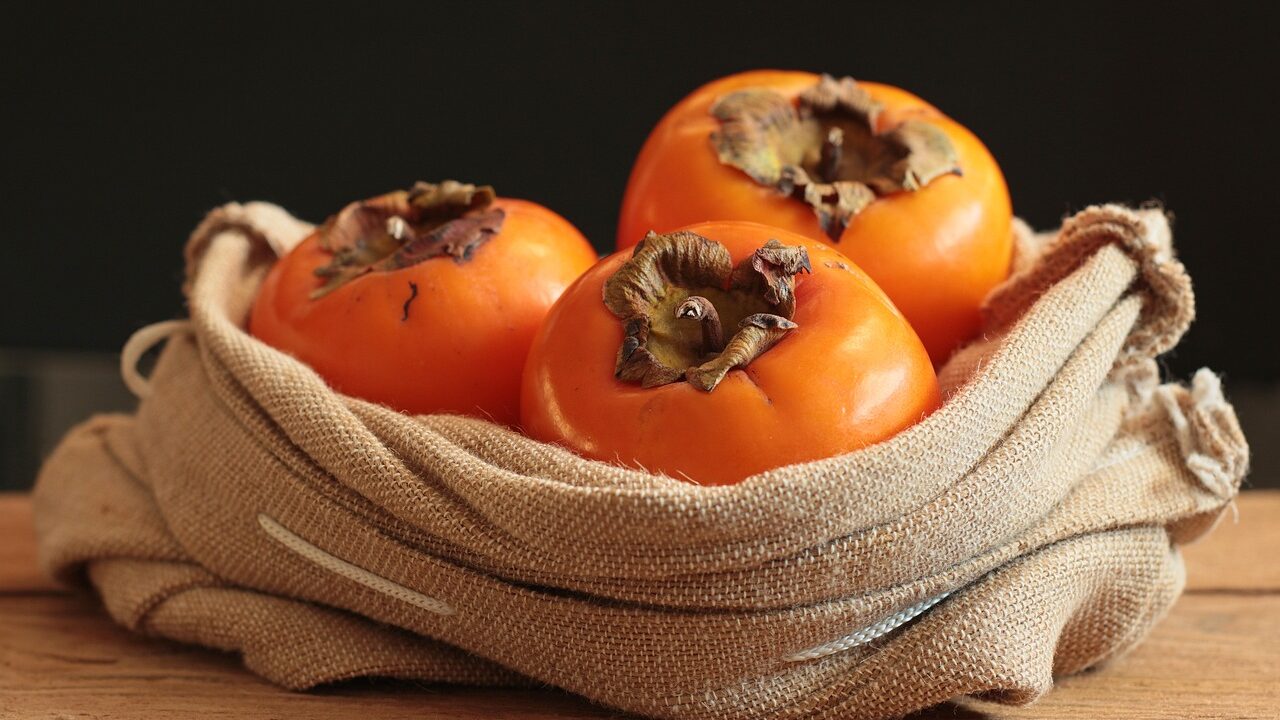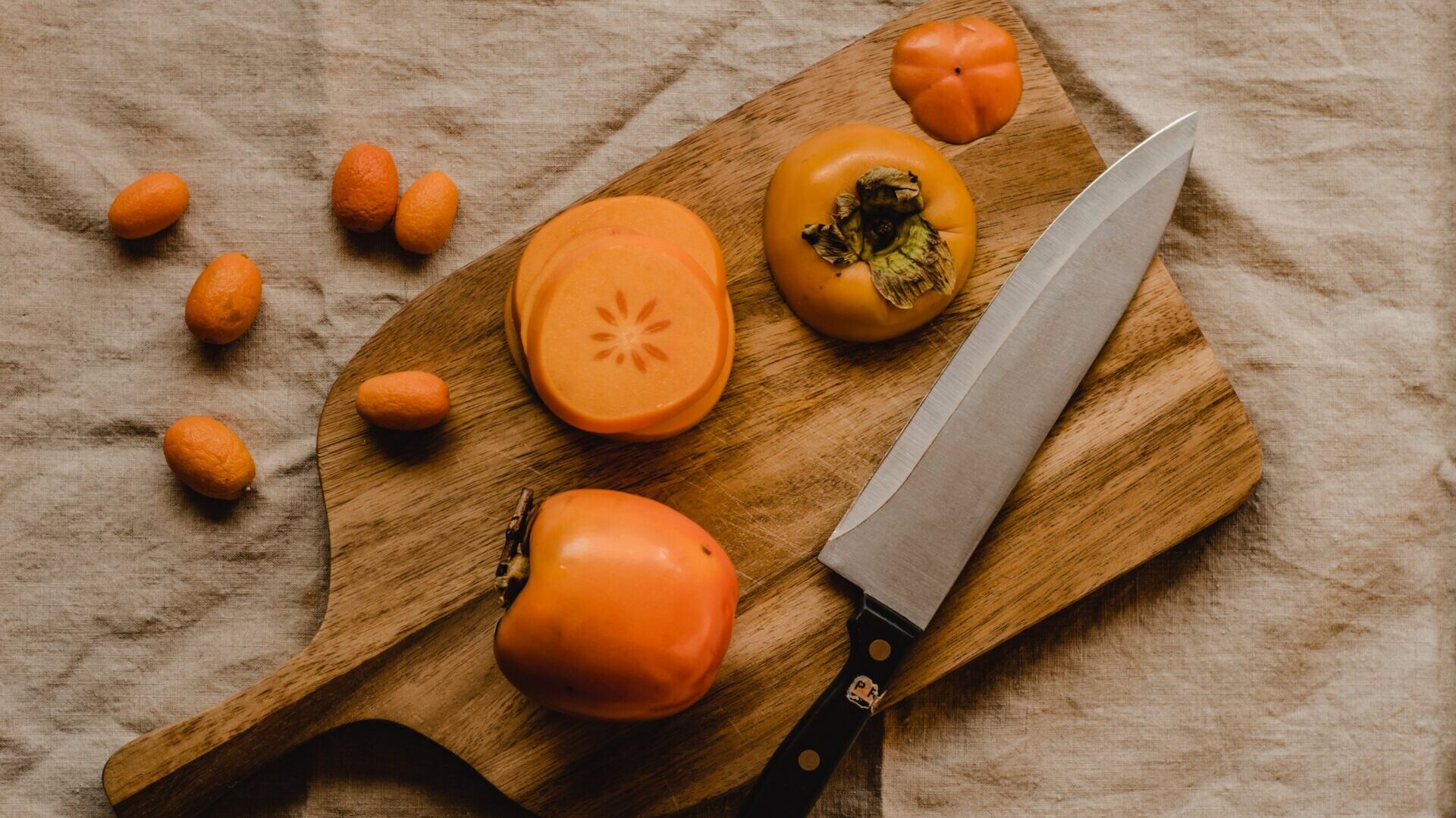
Persimmons are a delectable, sweet fruit with a succulent texture and a vibrant hue that can brighten up any dish or dining experience. From the vivid orange color to the unique flavor profile, persimmons are a favorite among fruit lovers, healthy eaters, and culinary enthusiasts. If you’ve ever walked past these eye-catching fruits at your local market and wondered how to eat a persimmon, you’re in for a treat. This guide will walk you through everything from selecting the perfect persimmon to incorporating it into your cooking.
Table of Contents
Introduction to How to Eat a Persimmon
Persimmons have been savored around the world for their delightful flavor and nutritional benefits. Rich in vitamins and antioxidants, this fruit is not just a tasty snack but also a worthy addition to any health-conscious diet. In recent years, persimmons have gained popularity beyond their traditional Asian markets, finding a place in the hearts of fruit lovers across the globe.
Choosing the Right Persimmon
Selecting Ripe Persimmons
To enjoy and how to eat a persimmon at its best, start by selecting the right one. A ripe persimmon should feel heavy for its size and have a smooth, vibrant skin without any bruises. Gently give it a squeeze; a ripe fruit will yield slightly to pressure. Avoid fruits with any green tints as they might be unripe and exceedingly astringent.
How to Cure Gum Disease Without a Dentist with 10 Natural Remedies: Click here
Differentiating Between Varieties
Two primary types of persimmons are widely available: Fuyu and Hachiya. Fuyu persimmons are squat and round and can be eaten firm like an apple. On the other hand, Hachiya persimmons are acorn-shaped and should be consumed when they’re soft and almost jellylike inside. Ensuring you know which variety you have is key, as eating an unripe Hachiya can leave a bitter and astringent taste due to its tannin content.

Preparing the Persimmon
Washing and Peeling Techniques
Before diving into this delicious fruit, wash the persimmon under cool running water to remove any dirt or residue. The skin of Fuyu persimmons is edible, but if you prefer, you can peel it using a vegetable peeler or knife, much like you would an apple or pear. Hachiya persimmons, when ripe, may be too soft to peel; in this case, simply slice off the top and scoop out the flesh.
Removing the Stem and Leaves
After washing, remove the stem and leaves by pinching them off or using a paring knife. This process should be easy and clean, especially if the persimmon is ripe.
Slicing and Dicing
How to Slice a Persimmon into Wedges
To slice a persimmon, first cut off the top, where the leaves were attached. Place the fruit flat side down for stability and slice it into halves. Cut each half into wedges or slices, depending on how you’d like to enjoy it.

Dicing for Use in Recipes
How to eat a persimmon if your recipe calls for diced persimmon, cut the sliced wedges into smaller, bite-sized pieces. A sharp knife will ensure clean cuts, and a chopping board will help collect any juicy drippings.
How to Cancel Yelp Ads: 1st Comprehensive Guide
Eating Fresh Persimmons
Enjoying the Fruit as Is
How to Eat a Persimmon? The simplest way to enjoy a persimmon is to eat it raw. Once sliced or diced, you can easily consume the fruit by itself and savor the natural flavors.
Pairing with Other Ingredients for a Salad or Dessert
Fresh persimmon slices are a great addition to salads, providing a burst of sweetness and a crunchy texture. You can also pair persimmons with yogurt or oatmeal to create a nutritious breakfast or dessert. The mild sweetness of the fruit complements a variety of flavors, making it a versatile ingredient in many dishes.
Cooking with Persimmons
Recipes and Cooking Methods Using Persimmons
Persimmons can be more than just a fresh snack; they’re also fantastic in both sweet and savory recipes. Consider baking them into bread or muffins, adding them to stews, or even grilling them alongside meats for a distinct flavor enhancement.
Baking, Grilling, or Incorporating in Dishes
When baking, pureed Hachiya persimmon flesh adds moisture and sweetness similar to pumpkin or banana. Grilled Fuyu persimmon slices make an excellent side dish or salad topping. Furthermore, diced persimmons can be folded into pancake or waffle batter for a fruity twist.

Storing Persimmons
Proper Storage Techniques to Prolong Freshness
To extend the shelf life of persimmons, keep unripe ones at room temperature until they reach the desired ripeness. Once ripe, persimmons should be refrigerated to maintain their freshness. Placing them in a plastic bag with some air inside can also help prolong their lifespan.
Freezing or Preserving Options
If you’ve got more ripe persimmons than you can consume, freezing is an excellent way to preserve them. Puree the persimmon flesh or slice it into chunks and place them on a baking sheet to freeze individually. Once frozen, transfer the pieces to airtight containers or freezer bags. They’ll be ready to use in smoothies, desserts, or other recipes whenever you need them.
Frequently Asked Questions (FAQs)
What is a Persimmon?
A persimmon is an edible fruit that comes from trees in the genus Diospyros. There are various species, but the most commonly consumed ones are the Fuyu and Hachiya. It’s known for its sweet, honey-like flavor and can be eaten raw or used in cooking and baking.
How can you tell if a persimmon is ripe and ready to eat?
For Fuyu persimmons, they should be firm with a slight give, similar to a tomato, and have a deep orange color. Hachiya persimmons should be very soft to the touch, almost pudding-like inside. Ripe Hachiyas will feel squishy, and their color will be a deep, reddish-orange.
What is the best way “how to eat a persimmon”?
The best way to eat a ripe Fuyu persimmon is to wash the fruit, cut it into quarters or slices, and eat it like an apple. For Hachiya persimmons, since they are very soft when ripe, you can cut off the top and scoop out the flesh with a spoon. Alternatively, you can slice them open and spread the soft fruit on toast or crackers.
Do you eat the skin of a persimmon?
Yes, the skin of a Fuyu persimmon is edible and does not need to be peeled for consumption. However, some may prefer to peel it due to texture preference. For the Hachiya variety, due to its soft nature when ripe, many choose to scoop out the flesh and discard the skin, though the skin is edible if desired.
Can you eat an unripe persimmon?
Unripe Hachiya persimmons contain high levels of tannins which can make them astringent and unpleasant to eat. You should wait until they are fully ripe. Unripe Fuyu persimmons are firmer and can be eaten, but their flavor may not be as sweet and fully developed as ripe ones.
Are there any health benefits of eating persimmons?
Persimmons are high in fiber, vitamins A and C, and manganese. They’re also a good source of antioxidants. Eating persimmons may contribute to digestive health, improved vision, and better heart health.
Can persimmons be cooked, or are they only to be eaten raw?
Persimmons can be both cooked and eaten raw. Fuyu persimmons hold their shape well and are excellent for adding to salads, baking into desserts, or cooking in savory dishes. Hachiya persimmons are generally too soft for cooking whole but are fantastic for jams, purees, or baked goods.
Are there any precautions to take when eating persimmons?
While persimmons are generally safe to eat, they should be consumed in moderation. Eating them on an empty stomach, especially the astringent varieties if not fully ripened, can cause digestive issues. Those with sensitive stomachs or certain medical conditions should consult a doctor. Additionally, persimmons can form bezoars (hardened digestive masses) if large quantities are consumed, particularly the skins and fibrous parts.
Can persimmons be frozen?
Yes, persimmons can be frozen. For Fuyu persimmons, you can slice them and freeze them on a baking sheet before transferring them to a freezer-safe bag or container. Hachiya persimmons can be pureed and frozen in airtight containers. This method is useful for later use in recipes.
How should I store persimmons at home?
Fuyu persimmons can be kept at room temperature if they are not yet ripe. Once they reach the desired ripeness, they should be stored in the refrigerator to prolong their shelf life. Hachiya persimmons that are not yet ripe should also be kept at room temperature until they become very soft, at which point they too should be refrigerated.
Conclusion
Persimmons, with their enticing flavor and various health benefits, are a worthy addition to your diet. From choosing the right fruit to savoring it in a delectable recipe, this step-by-step guide aims to equip you with the knowledge to enjoy and how to eat a persimmon in numerous ways. Experiment with different methods of preparation and incorporate this versatile fruit into your culinary repertoire. Whether enjoyed fresh, baked, grilled, or frozen, persimmons are sure to delight your palate and add a splash of color to your meals. So, grab a persimmon the next time you’re at the market, and relish in the simple pleasures of this autumnal treasure.
Whether eaten as a standalone snack or incorporated into elaborate dishes, the versatility of persimmons inspires creativity in the kitchen. The journey from selecting the perfect fruit to taking the first bite is full of delightful discoveries and rich flavors. So go ahead, indulge in the world of persimmons, and explore the multitude of ways to enjoy this delightful fruit.

1 thought on “1st Comprehensive Guide on How to Eat a Persimmon”